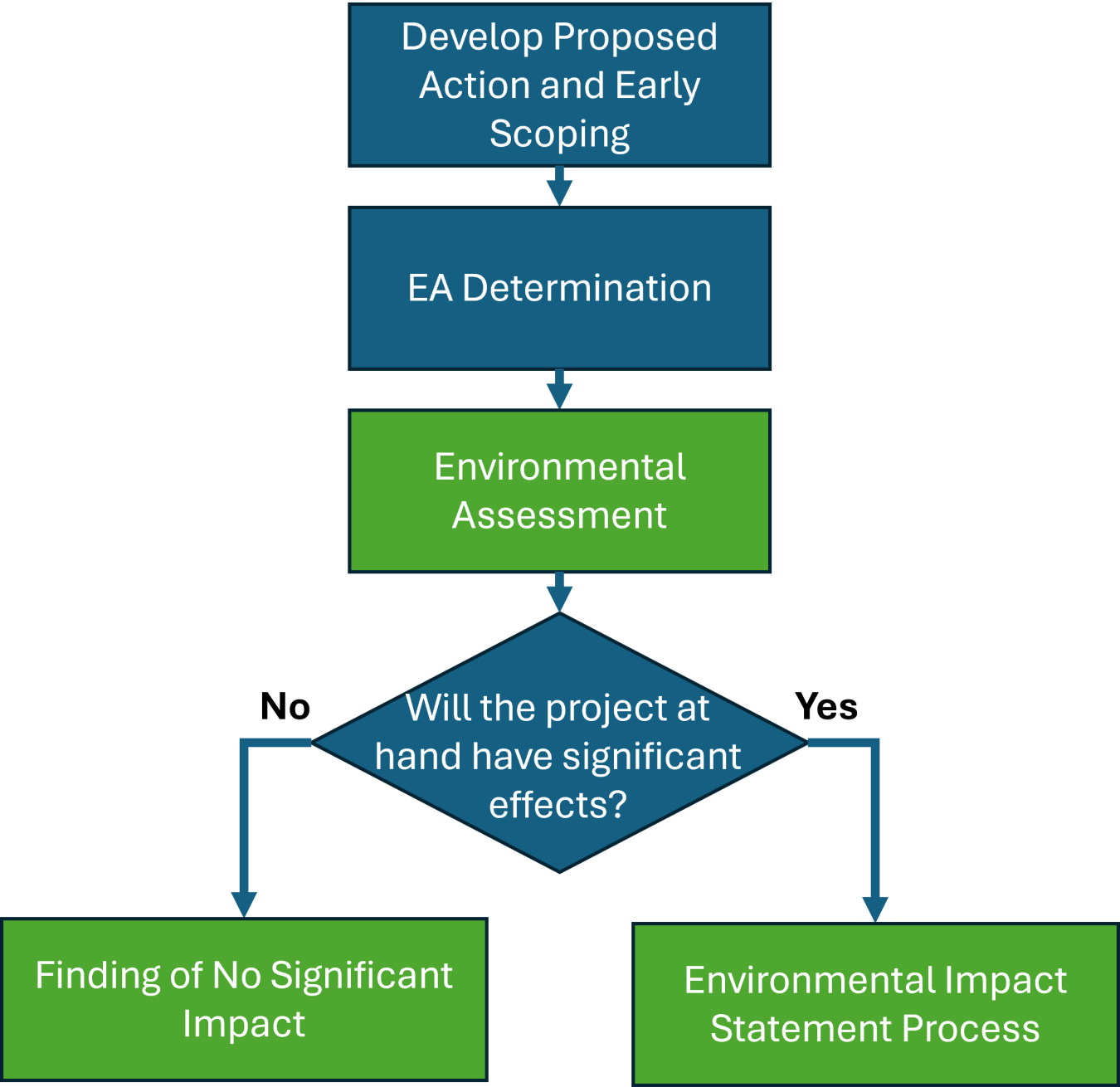An EA is a “a concise public document prepared by a Federal agency to set forth the basis of such agency’s finding of no significant impact or determination that an environmental impact statement is necessary." DOE prepares an EA for a proposed action that cannot be categorically excluded and which “does not have a reasonably foreseeable significant effect on the quality of the human environment, or if the significance of such effect is unknown” (NEPA Section 106(b)(2)).
Under the DOE NEPA Implementing Procedures Section 6, an EA must include:
- Purpose and need for the proposed action based on DOE’s statutory authority. When the proposed action involves a response to an applicant’s proposal, the purpose and need shall be informed by the goals of the applicant;
- The proposed action, a reasonable number of alternatives to the extent required by NEPA (42 U.S.C. § 4332(2)(F) and 4332(2)(H)), and no action alternative (which may be encompassed within the discussion of the affected environment);
- An explanation why particular environmental effects would not result in significant impact and, thus, are not further analyzed in the environmental assessment (section 3.2); and
- The reasonably foreseeable effects of the proposed agency action and the alternatives evaluated sufficiently to determine whether any of the effects are likely to be significant and whether any significant effects can be made non-significant through mitigation.
If DOE determines there are no significant effects, DOE can issue a finding of no significant impact (FONSI), concluding the NEPA process for the action. If DOE identifies significant effects, it must prepare an environmental impact statement.
An EA shall not exceed 75 pages, not including any citations or appendices (NEPA Section 107(e)(2)), and be completed in no more than one year (NEPA Section 107(g)(1)(b)).
DOE publishes each EA and FONSI its NEPA website.
See the Office of Environmental Management’s EAs and associated FONSIs.


